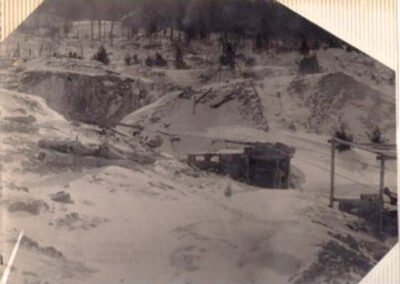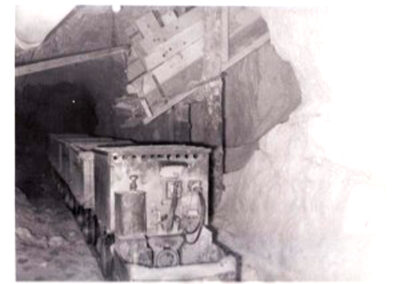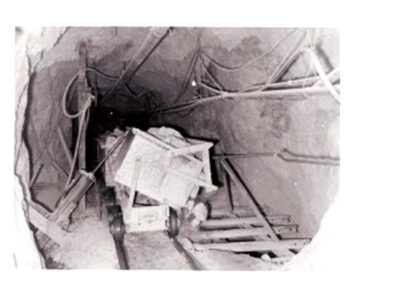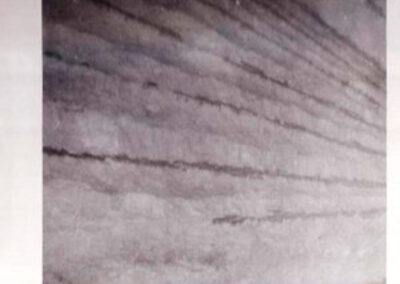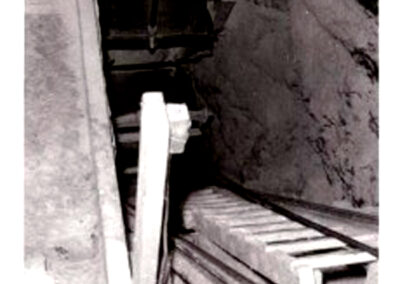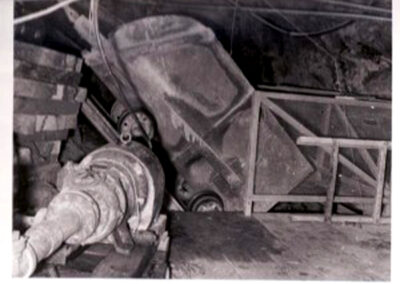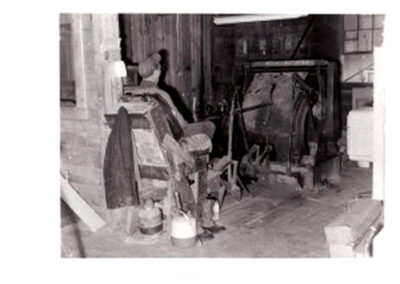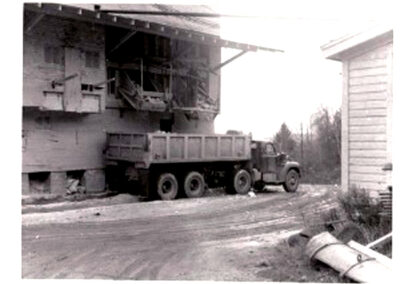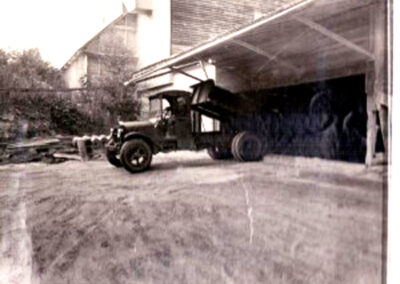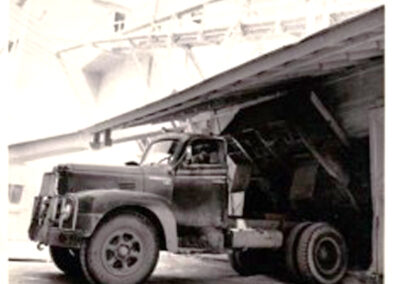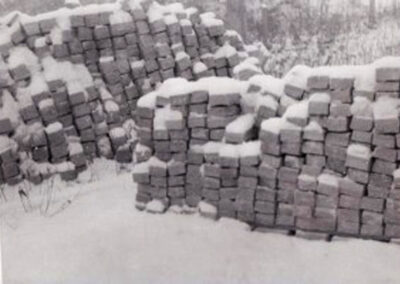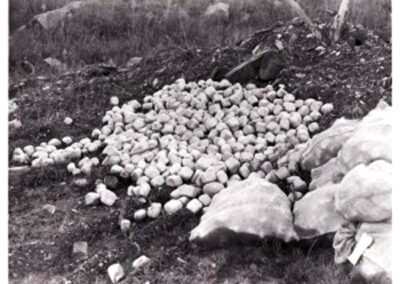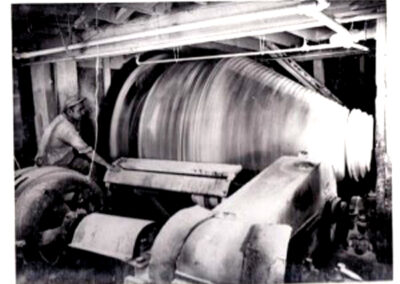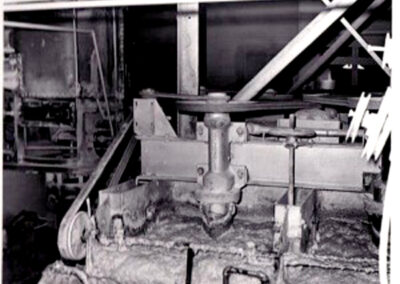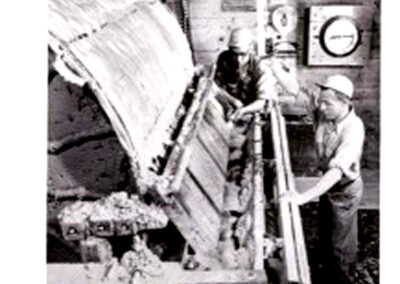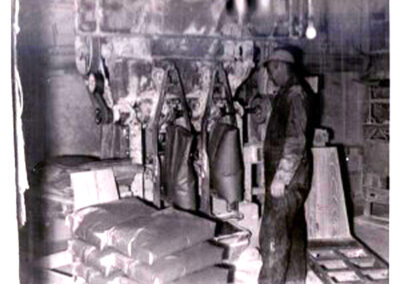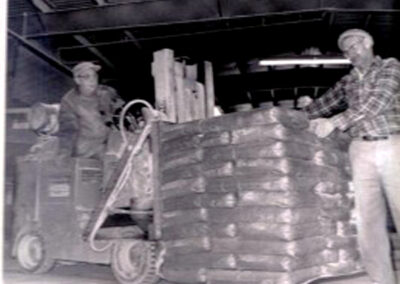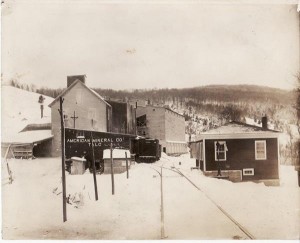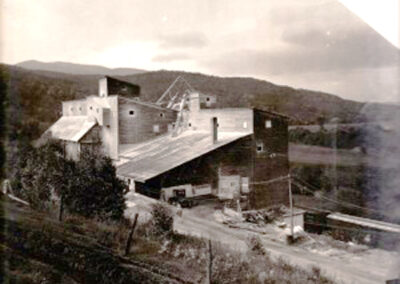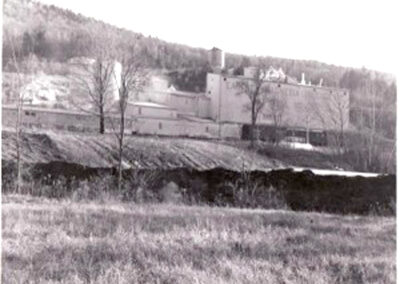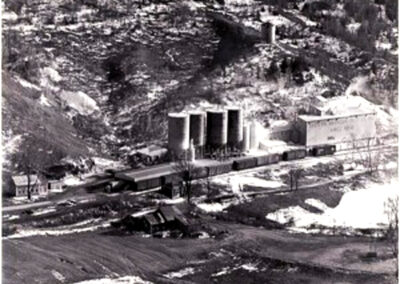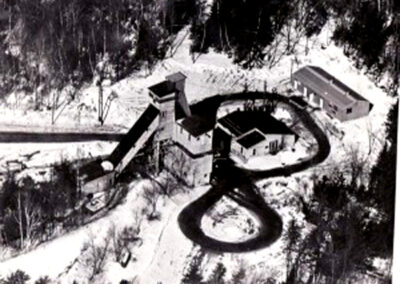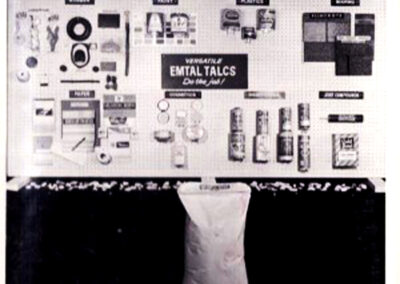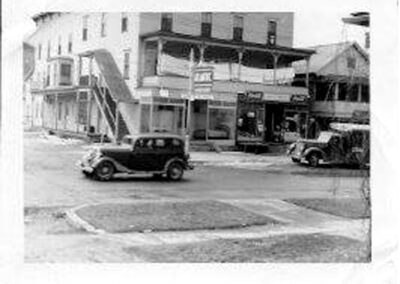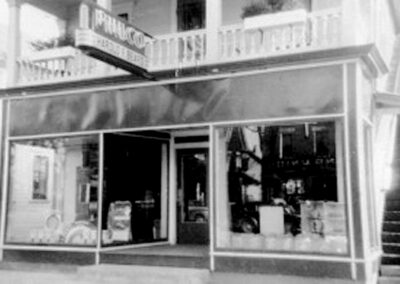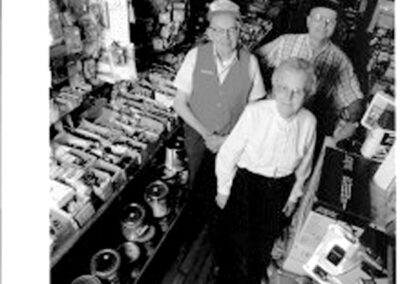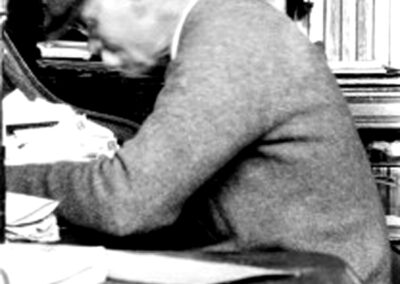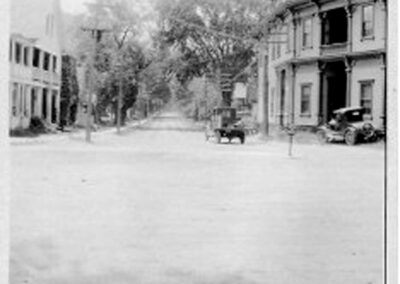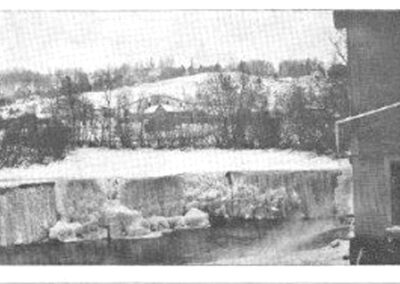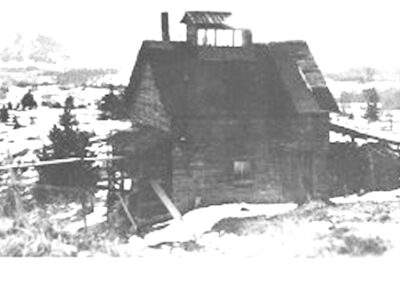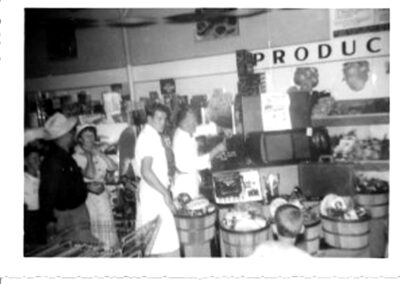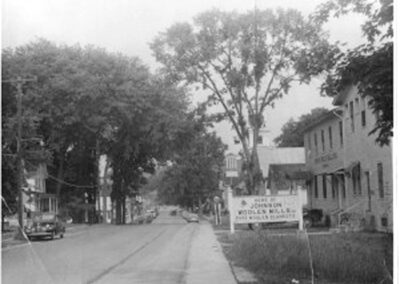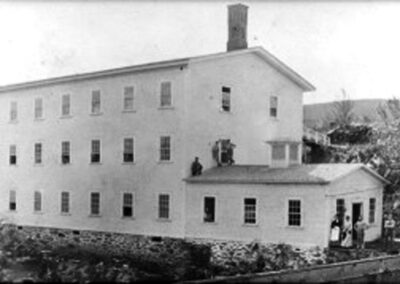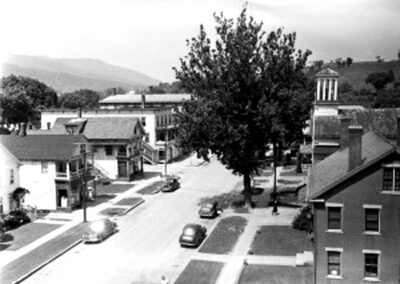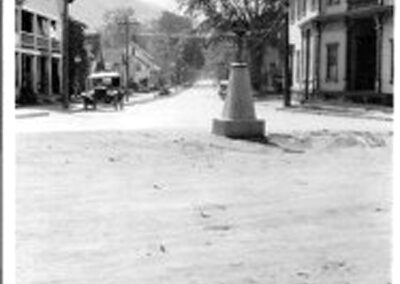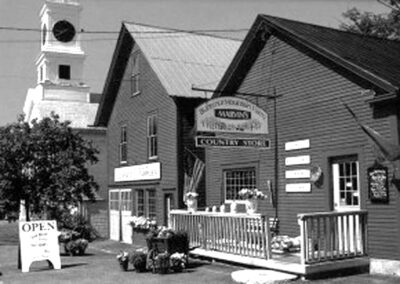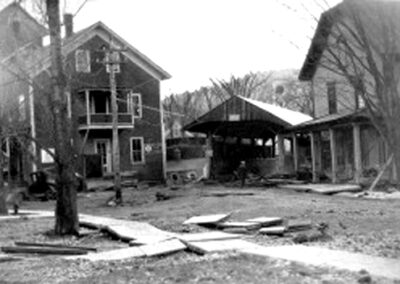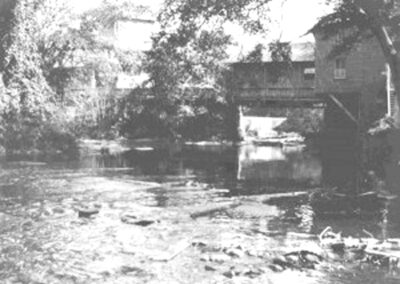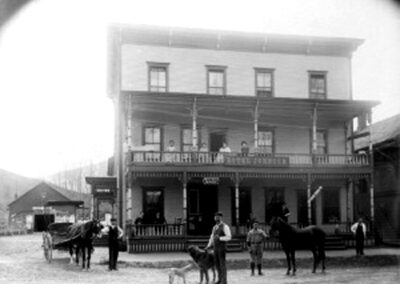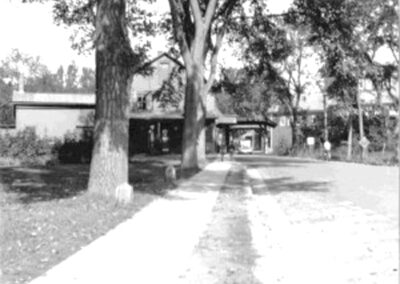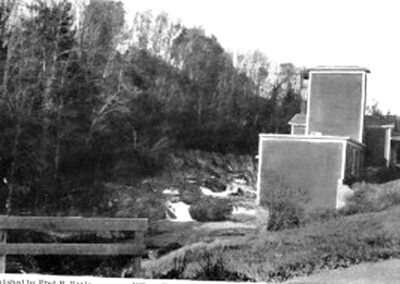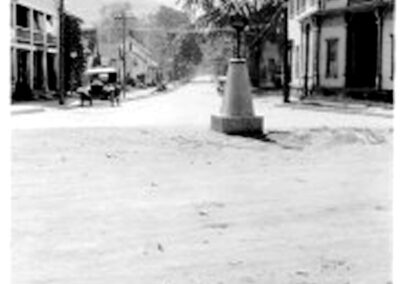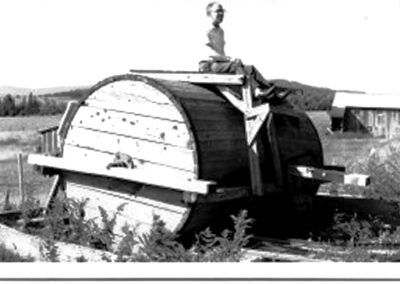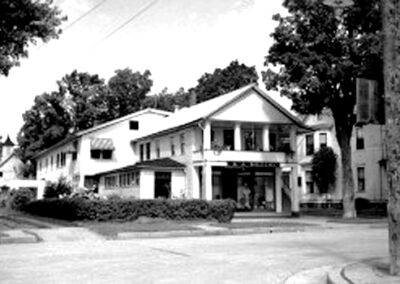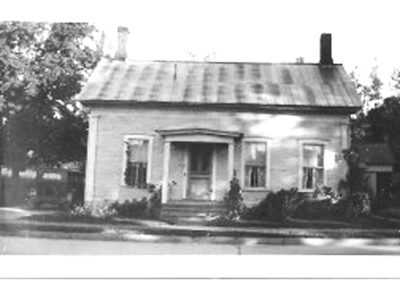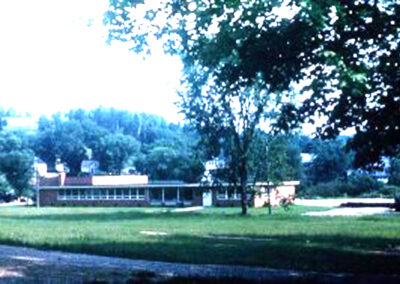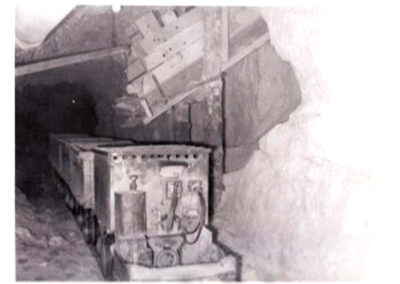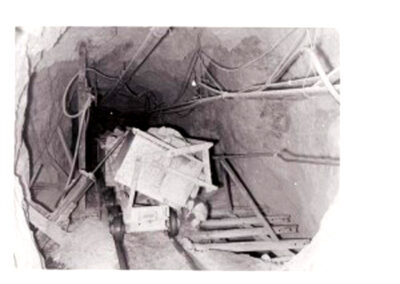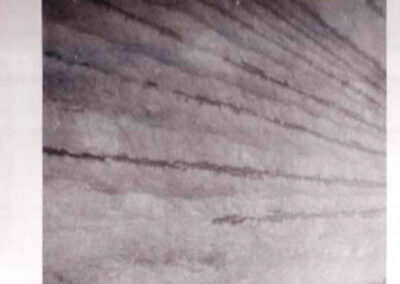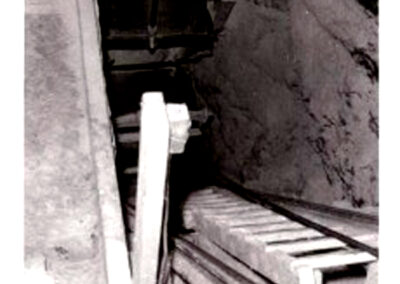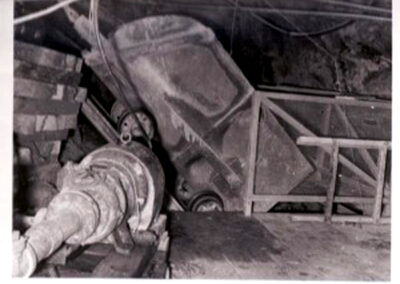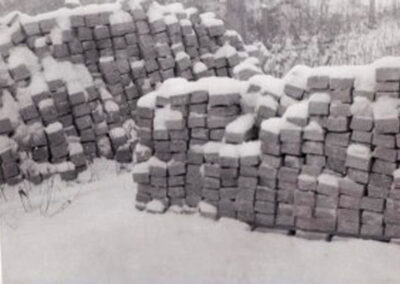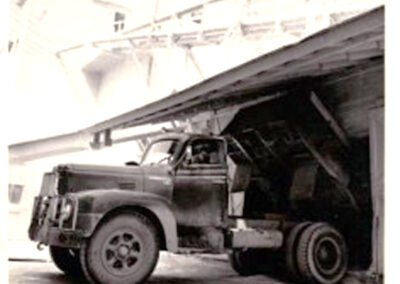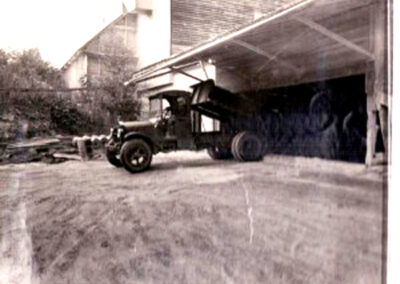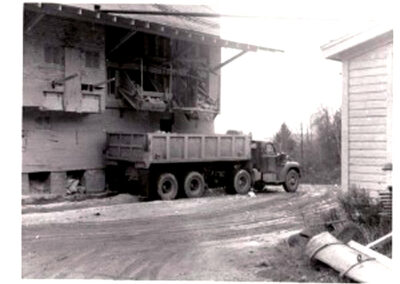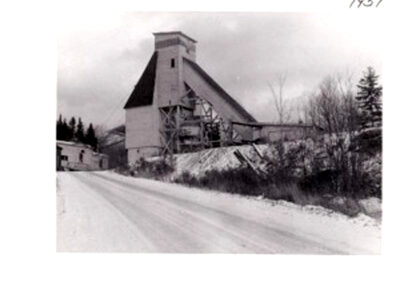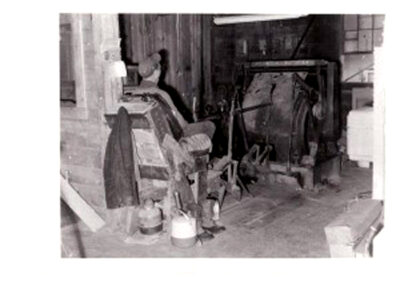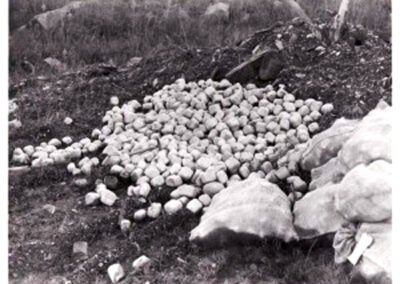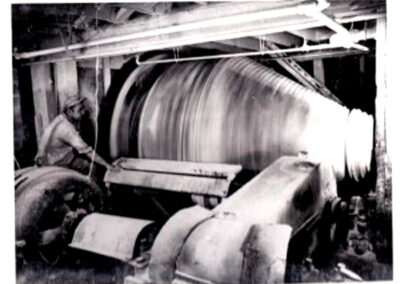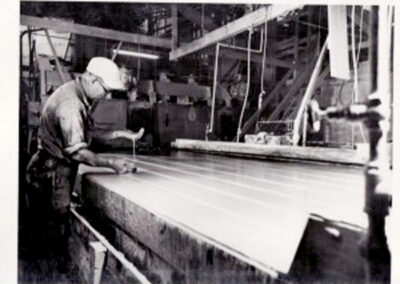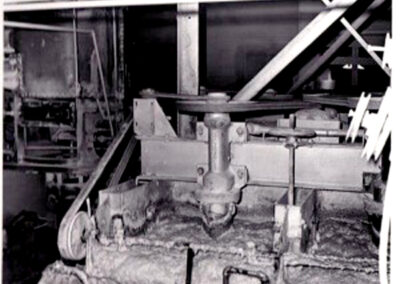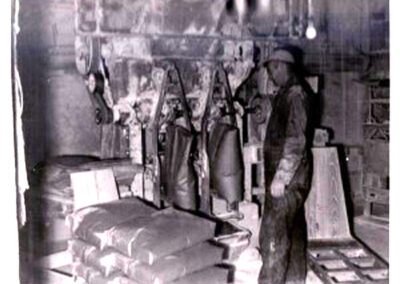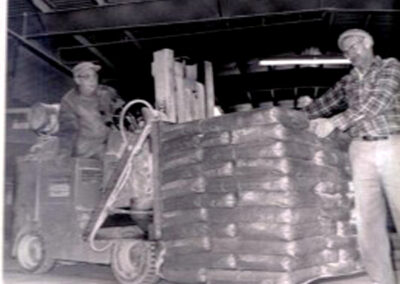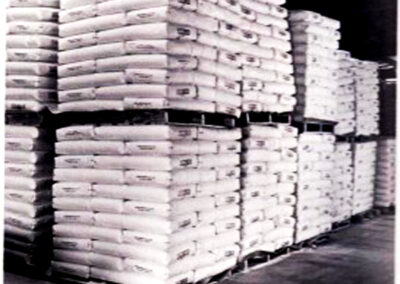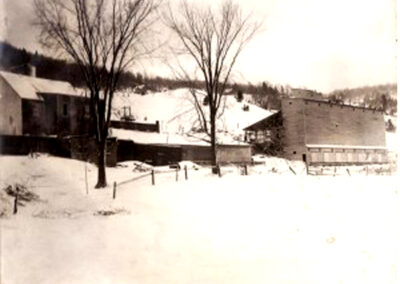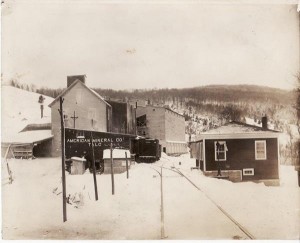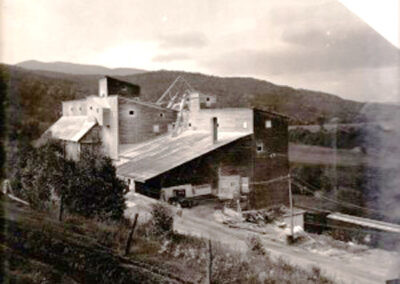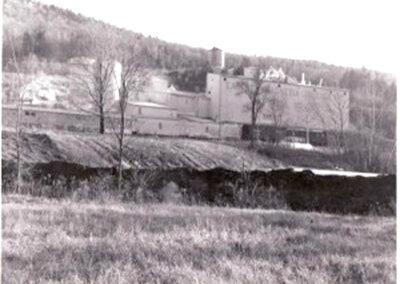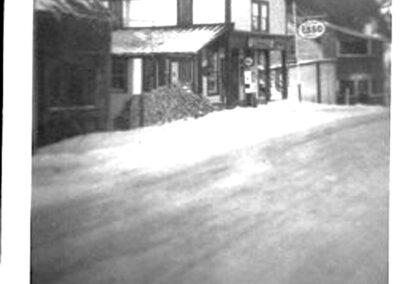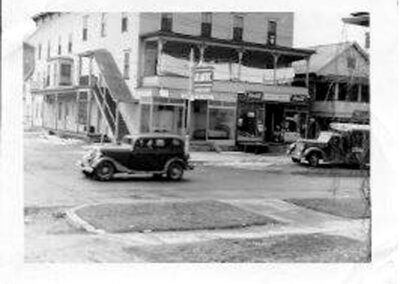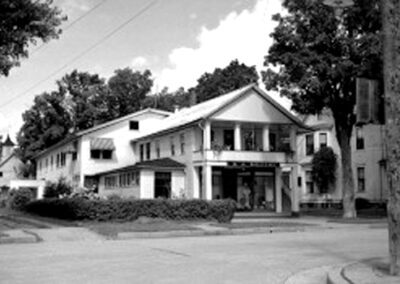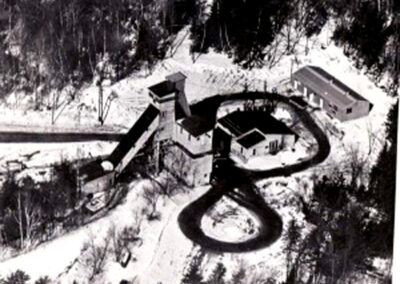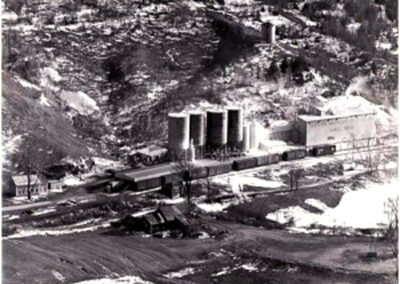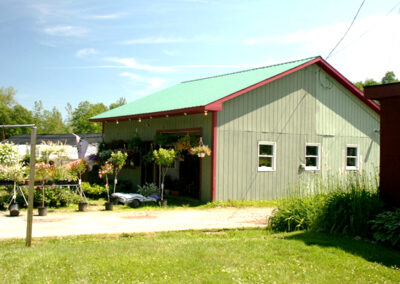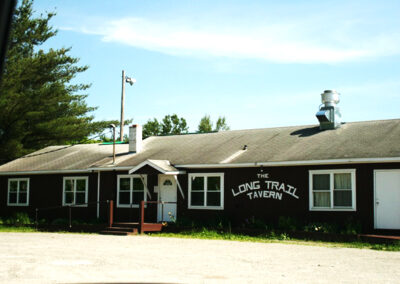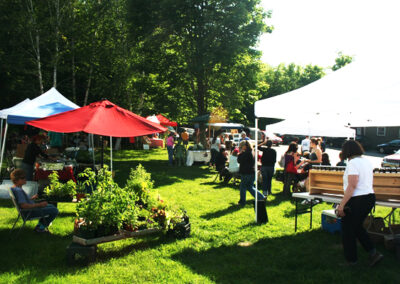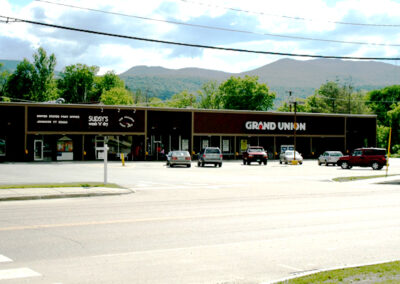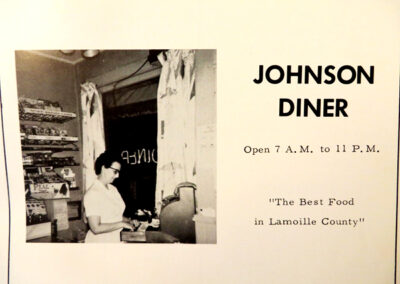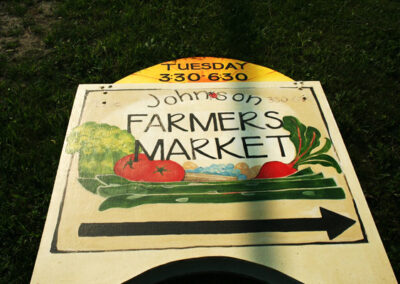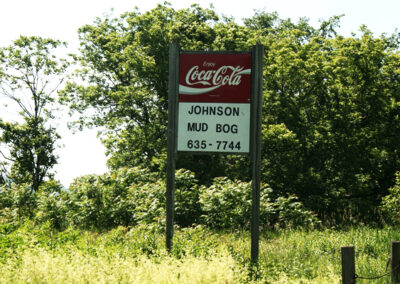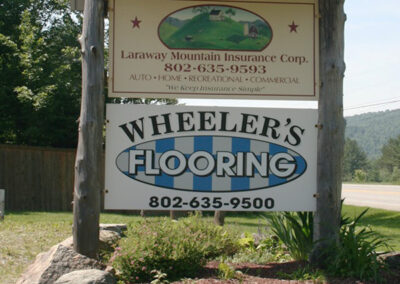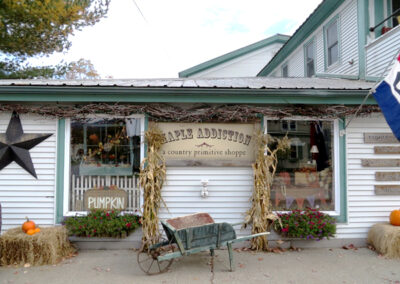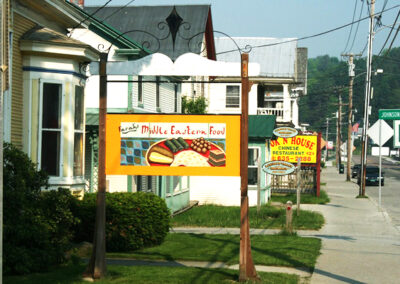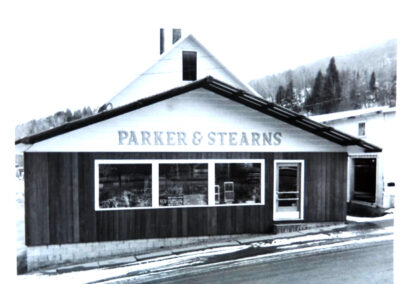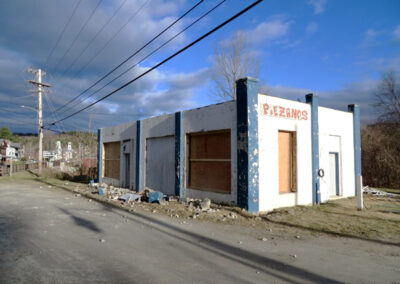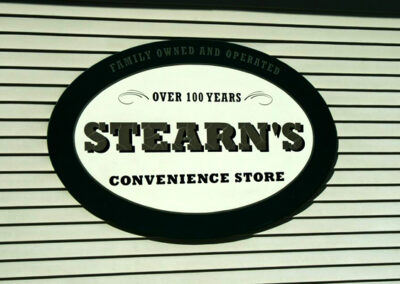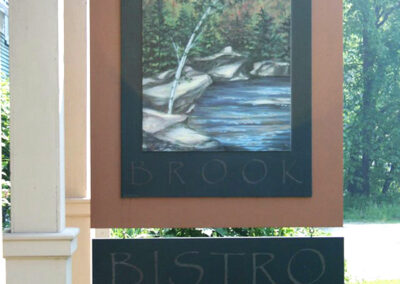Business and Industry
Learn more about the early history of business and industry in Johnson by checking out the gallery below or by visiting Holcomb House!
1st mine shaft Located at the end of Railroad St. Remnants can still be found behind the food shelf. The ore was transported to mill by train.
Mine Walls Talc ore runs in leases (like veins). This is a wall of Lease after drilling and blasting.
Mine Skip Hoist From a separate building skip is raised by large electric powered winch. Note the bar across the top. Each mark indicates where skip is in shaft.
Headframe Skip dups at top and ore falls into bins for different sizes. Note the hoist house in left of photo.
Loading Ore Truck Loading from bin of large sized ore. To left are 2 bin openings for smaller size. Probably early to mid -60s.
Jasper Lining Bricks of jasper stone (very hard) from western U.S., was used to line walls of Harding Mill.
Jasper Stone Some material used as liner, but some stone sized to mix with ore to fine crush it. Samples can be seen at Johnson Historical Society.
Harding Pebble Mill Like a large tumbler mill, lined with jasper bricks and tumble grinding talc mixed with jasper ball medium.
Flotation Operation This was the first mill in the country to use this process to separate very fine product from what was previously waste.
Assad Saleeby Bldg, 50 Lower Main Street West
Asaad Saleeby’s 1st store was across Main St. where Northern Highlights Salon is now. Mr. Saleeby sold an exceptional line of dry goods serving clientele within a 40 mile radius.
Atlantic Room (left) from the Hotel Johnson, which became Hill’s Furniture Store. Quality Market (right) was meat/fruit market operated by Joe and Sadie Salvatore and later by Bob Towne a Townes’s Market.
Beard’s Hardware Established circa 1928 on south side of Main St. Previously Riddle Brothers and now Downtown Pizza.
Railroad St. Looking south on Railroad St. Circa Early 1920’s . Nye Block on the right. The building on the left now houses the Laundromat and apartments.
Pearl St. Dam and falls on Gihon River located between the Gris Mill and Johnson Woolen Mill Building. Then Gris Mill building is now home to the Vermont Studio Center.
Sugaring This is the Floyd Ellsworth sugarhouse on Clay Hill. A lot of open land in the background that you don’t see today.
Grand Union Market This is a picture of the Grand Opening of Johnson’s first super- market. (now Sterling Market) Dick Sinclair Manager (on Right) Larry Manning clerk (left).
Johnson Woolen Mill Circa 1940 on Main St. The history of the woolen mill goes back as far as 1836. A New factory was build by D.A. Barrows in 1905. This building was the pants factory.
Johnson Woolen Mill Pearl Street plant for fabric manufacturing. Much of the dyed fabric was rinsed out in the river below.
Johnson Main St looking west. Photo circa 1940’s. Brick building on right was the bank, The Sterling Trust Co., on left the first full building is Beard’s Hardware and then the Johnson Pharmacy.
Intersection Main St and Railroad St. Note the Silent Policeman . There was also one at Pearl and Main St. intersection.
Marvin’s Store (Butternut Mountain ) This was home to the town blacksmith shop and garage (right of building ) and Fire station on left. Later connected as one building.
C.H. Stearns (left) Covered Bridge (center) Store / apartments (V. Despault block) (right) Immediately after the 1927 flood. Today the VT. Studio School (left) Pearl St. Bridge (center) .
Hotel Johnson- Early 1900’s The back this building was built in 1812. The rear of building was closed during prohibition. It last operated as hotel/tavern by St. Jock family. See old register at Johnson Historical Society. Later Hills Store /Quality Market. Today apartments.
Looking North on Pearl St. from Main St. Twin Covered bridges and early garage/ blacksmith shop/theatre/ apt. building on west side of Street.
Village Powerhouse 100C Looking north at the Powerhouse from the east end of the covered bridge. Removed in 2019.
Roger Jones on Roller
These rollers were once used to pack snow on town roads before plows were used.

